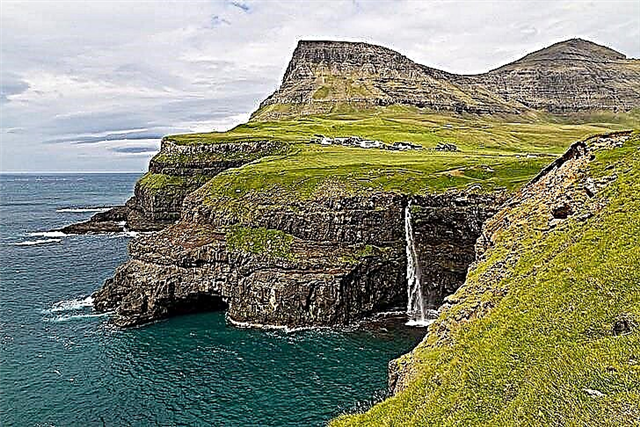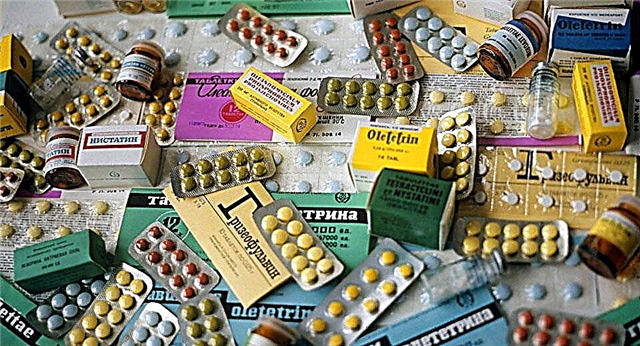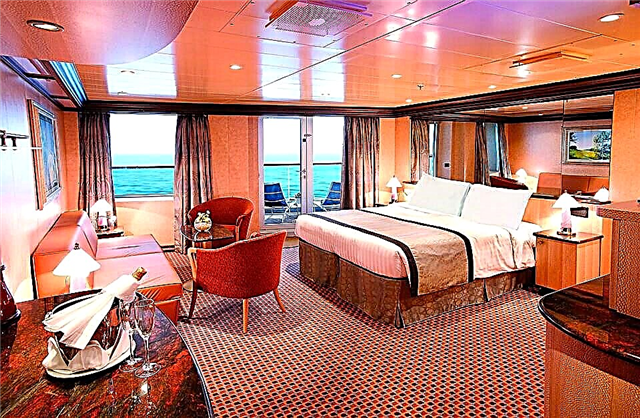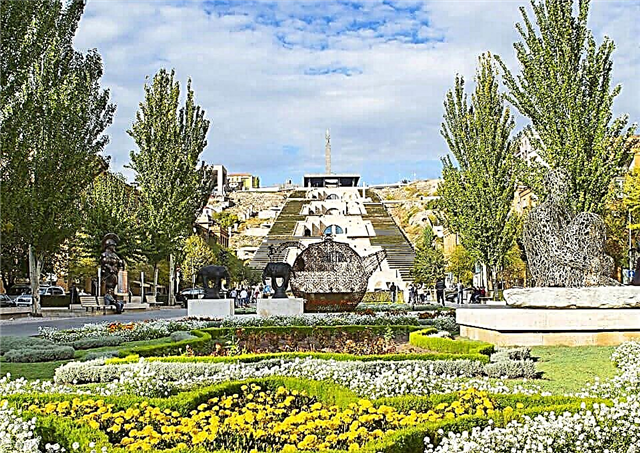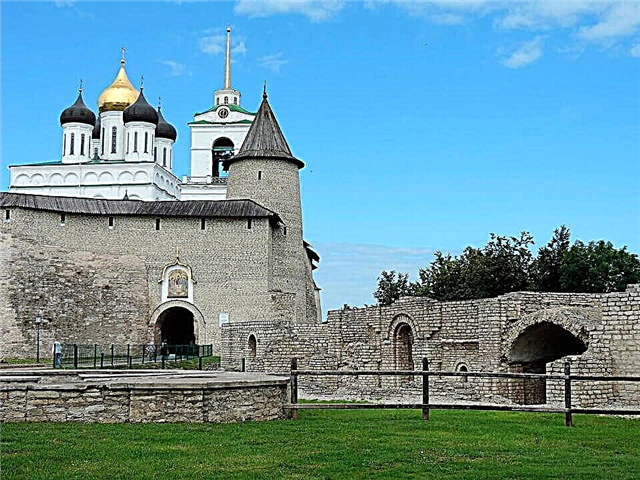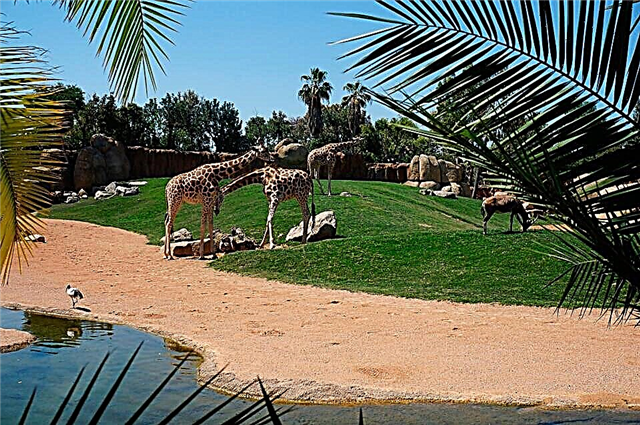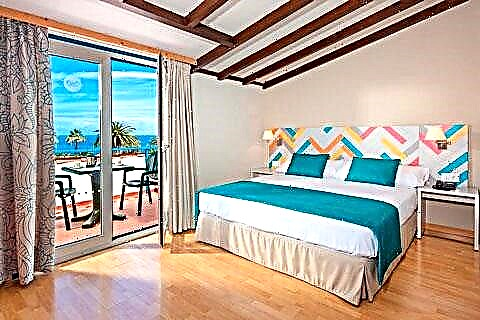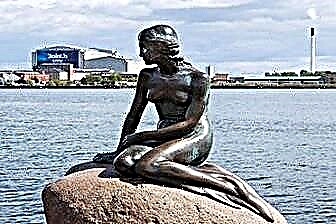Denmark is an island country. There are many great resorts here that are popular in Europe. It includes more than 400 islands, and Greenland and the Faroe Islands have an autonomous status.
Another "country" has an autonomous status, which is located right in Copenhagen. Several quarters wished to secede from Denmark, and declared their republic - Christiania. After a long confrontation, the hipsters were left alone. Today this place is a tourist exotic, a small piece of Amsterdam.
Thanks to the efforts of the current monarchy, about 600 castles, palaces, fortresses have survived on the territory of Denmark. They are distinguished by richness and splendor in exteriors and interiors. Almost all the existing variety of styles is present in the architecture of buildings. The country has rich art galleries, collections of sculptures, a huge number of museums. Sometimes there are ideas of the modernists of our time, embodied in life, which carry them forward for centuries. Visit Red Square in Copenhagen or the ARoS Museum

The best hotels and hotels at affordable prices.
from 500 rubles / day
What to see in Denmark?
The most interesting and beautiful places, photos and a short description.
Nyhavn
The ancient harbor of Nyhavn is called the heart of Copenhagen. The colorful houses on the embankment remember G.Kh. Andersen, who managed to live in almost all of them. Nowadays, rooms are rented not only in houses, but also in medieval ships moored in the harbor. The street is replete with a variety of souvenir shops and cafes.

Rosenborg Castle
The summer residence of the Danish kings was built according to all the rules of Renaissance architecture. Today it is a castle-museum, which houses the treasures of monarchs, attributes of power, large collections of paintings, porcelain, etc. On the territory of the palace park there is a cafe, a puppet theater, you can see the statue of Andersen.

Cape Grenin
The northernmost point of Denmark is famous for the fact that two seas meet here - the Baltic and the North. To see the quite visible border, you need to walk along the spit, often overcoming the sandy drift. Swimming in this place is strictly prohibited due to strong leaks. In the 15th century, a lighthouse was built on the coast, which is still in operation. Another attraction of this place is the warning church for those who build their home on sand, not stone. An entire floor of this building was covered with sand, and the parishioners left it.

Øresund bridge
The Öresun line connects Denmark with Sweden and is a highway and railroad. The structure includes a bridge, an artificial island and an underwater tunnel. It has a length of more than 7 thousand meters. The fare is about 46 euros. The opening ceremony in 2000 was attended by King Carl Gustav and Queen Margaret.

Church of Our Savior in Copenhagen
The Church of Christ the Savior is easily recognizable by the unusual appearance of the tower, which is somewhat similar to a cake. Gradually, the steps leading from the inside go out in the form of a spiral, gilded staircase. Above, a spire with a sphere and a four-meter statue of Christ sparkles. The Savior holds a banner in his hand. This is the main temple of Copenhagen, which, among other things, is unique with an operating organ of the 17th century and a carillon of 48 bells.

Tivoli park
Throwing open its fabulous gates in 1843, Tivoli (Aarhus) became one of the first amusement parks in Europe. From May to September, cheerful music and children's laughter never cease, street performers give free performances. In addition to extreme entertainment, it has its own pantomime theater, a huge hall for classical music, and celebrities often perform. During the day, Tivoli is buried in flowers, and at night in fireworks.

Museum of Contemporary Art in Aarhus (ARoS Aarhus Kunstmuseum)
One of the most unusual panoramas offered by the authors and employees of the Museum of Art is to look at the city through the multicolored glass of the rainbow halo above the roof of the building. ARoS is a major installation center for creative experiments of contemporary artists. The five-meter sculpture of a squatting boy by artist Ron Mueck has become a kind of museum's business card.

Roskilde Cathedral
The two towers of this splendid cathedral have always attracted Danish artists who painted views of Denmark. The temple became a repository of the spirit and history of the Danes; the country's monarchs were buried here for almost a thousand years. Many of the tombs are real works of art. The first wooden church on this site, according to the evidence of the runes found, was built by the first king of Denmark, Harold Bluetooth, back in the time of the Vikings. The cathedral has preserved carved benches from the 15th century, an elaborate altar and bas-reliefs.

New Carlsberg Glyptotek
King Carl Jacobsen not only created the well-known trade mark of Carlsberg beer, but also established an amazing museum in Copenhagen, which has no equal in Europe. The glyptotek contains a large collection of sculptural paintings of ancient, Roman, Egyptian, Etruscan models. Extensive collections of works by Rodin, Degas. The second floor is occupied by a collection of paintings by great masters: Van Gogh, Monet, Cezanne, Gauguin.

LegoLand
In the small town of Billund, the Danes have created a wonderful country - LegoLand. Every child has heard about her at least once in his life and dreamed of getting there. The park occupies 100,000 sq. m and consists of 8 zones. For its construction, the creators needed about 50 million cubes. For the smallest, the Duplo zone with a soft cover is open. A small train goes around the fabulous country, there is a children's driving school, its own operating fire station, which also consists of light cubes.

Frederiksborg Castle
Famed King Brewer Carl Jacobsen founded the museum at Frederiksborg Castle in Hilelerd, making the life and history of Danish kings tangible to the curious tourist public. This palace is a kind of symbol of the monarchy, which has never been interrupted in Denmark. In the center in front of the castle is the fountain of Neptune. The walls are richly decorated with sculptures, columns, and bas-reliefs. All the monarchs of Denmark were crowned in the chapel of the castle.

Runestones in Jelling
The first written mention of Denmark as a state was found on runestones, which are kept in the snow-white church of Elling. Scientists attribute the inscriptions on the stones to 955. A large stone was installed by King Horus in honor of his wife Tyra, and the second - by his son Harold, who baptized Denmark. Currently, the stones are dressed in glass sarcophagi to keep them from destruction.

Kronborg castle
Shakespeare glorified the city of Elsinore to the whole world by settling Hamlet in Kronborg Castle. Thanks to the playwright, Crown Castle became the castle of Hamlet, Prince of Denmark. Legends say that another prince of Denmark, the hero Ogier, the guardian of his native land, sleeps in the basements of the Kronborg castle. In case of danger, he will revive, he will rise from sleep and protect his people.

Direhavsbakken amusement park
The oldest amusement park in 1538 was established on the market square of Klampenborg at the Royal Deer Park. Today the organizers are trying to keep it in the style and spirit of the Middle Ages. Like many centuries ago, the audience is amused by Pierrot's tricks, circus artists. Take a bike ride to see the deer grazing in the Deer Park. The entrance is free.

The Little Mermaid Statue
The Little Mermaid from Andersen's fairy tale, beloved by the townspeople, has become the symbol of Copenhagen and all of Denmark. Few people are not familiar with the sad, and at the same time life-affirming, story of this touching heroine. 2013 marks 100 years since she appeared in the port. Edward Eriksen made a sculpture especially for the beer king Karl, after His Majesty was impressed by the production of the same name in the theater.

State Museum of Arts
The greatest collection of paintings and sculptural compositions of the museum has 9000 priceless exhibits of global importance. Titian and Rubens, Rembrandt and Michelangelo, Picasso and Durer, Matisse and Modigliani, a huge number of sketches, sketches of other famous artists. The initiator of the creation of the collection was the court curator of the Chamber of Arts G. Morel.

Bornholm
The pearl of the Baltic Sea, Bornholm Island is famous for its excellent beaches and mild climate. Here cherries, apricots and walnuts grow, and the inhabitants are skilled glassblowers. The island surprises with a variety of landscapes. Mountains, fields, forests, hills and even white sand dunes will delight the most sophisticated travelers. Round churches and windmills have become the visiting card of the island.

Chalk cliffs of Myehn Island
The white cliffs of the island, reflecting, dilute the blue of the sea. It seems that the artist outlined Maine with blue paint. The steep banks stretch for 6 km and rise in height up to 128 m. The highest place was named the Queen's Throne. The island was loved by swallows and swans. Here 20 species of orchids grow freely, which are protected by local laws.

Old town in Aarhus (Den-Gamle-Byu)
In the botanical garden of Aarhus, there is an open-air city-museum. The creators brought here old houses from all over Denmark, re-creating them in the smallest detail. Cobbled narrow streets, a mint, a port, mills, workshops that operate and offer to buy products, "residents" dressed in antique clothes - as if you are transported to the distant past ...

Faroe islands
18 islands have autonomous status in Denmark. All of them are of volcanic origin. Picturesque pictures of green hills, shaggy sheep grazing, houses with green grass roofs - more idyllic pictures are hard to imagine. Even on the roofs of concert halls, grass grows. Residents raise sheep and fish. The only thing that spoils the impression of the Faroese is the bloody celebration of the killing of dolphins.
